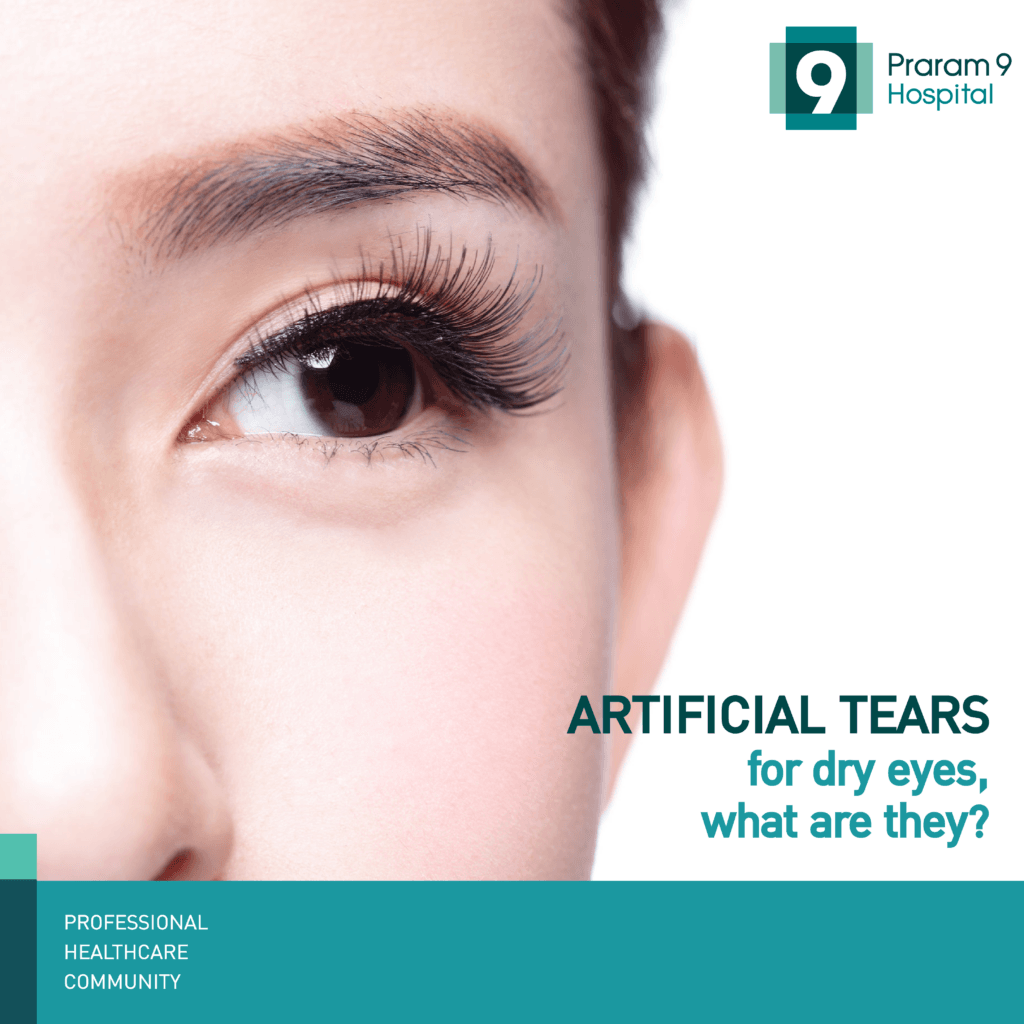Health Articles
Knowledge
Artificial tears for dry eyes, what are they?

Artificial tears for dry eyes, what are they?
What are artificial tears?
Artificial tears or eye lubricant are chemicals that can keep our eyes moist that is use in replacement when there are insufficient tears for the eyes to stay moist. Artificial tears, also known as eyes drop, can help to treat dry eyes condition as well as reducing eyes irritation from air pollution and allergies. It is considered a medication that can be purchase without doctors’ prescription at nearby local pharmacy. Generally, the chemicals that make up artificial tears includes carboxymethylcellulose, hydroxyethyl cellulose, hydroxypropyl methylcellulose and dextran, simply put they are the chemical that help keep our eyes most and feel refresh.
How many types of artificial tears and what are their advantages and disadvantages?
Eyes drops products that are commercially available can be categorized into 2 main group according to their characteristic which are:
1. Artificial tears in solution form such as water-based or water with oil-based eye drops.
The advantages of this types are ease of use without causing temporary blurry vision, many types that can be single or multiple dose and there are also options without preservatives mix in so you can feel assured for long-term usage
The disadvantages of this types are that it last for a short period of time, therefore you will need to reapply a few times per day and artificial tears without preservatives in its chemical composition have short term shelf life, usually no more than 24 hours.
2. Semi-solid artificial tears such as artificial tears wax or gel.
The advantages is that it last much longer.
The disadvantages is that it is hard to apply compare to water-based solutions and will affect vision temporary after applying it to the eyes.
Precaution when using artificial tears
There are advantages and disadvantages for each types of artificial tears, depending on which is suitable for you, which you have to be aware of when using the products.
– Single dose of artificial tears should not be kept in use for longer than 12-24 hours after opening them, according to the product instruction.
– Multiple dose products should not be kept in use for longer than a month as there are potential for infection from microbes.
– Individual who need to use artificial tears for extended period of time or are contact lens users should avoid using artificial tears with preservatives as it the chemical can build up slowly and affect the eyes.
– When applying the product, be careful not to let the tips of the container touches the eyes as it might cause eyes irritation or infection.
Artificial tears are short term solution for dry eyes. If you have long term dry eyes or eyes allergies, you should contact doctors for treatment that can tackle the roots of the condition.














